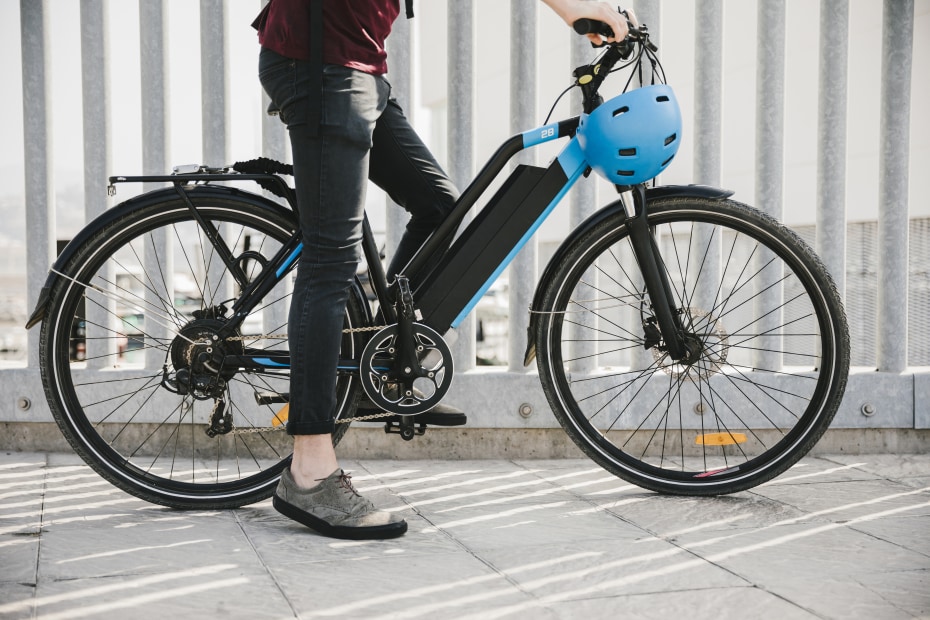In the past few years, e-bike rentals and ownership have revved up in popularity. These motorized devices are empowering older adults and individuals with disabilities to exercise, socialize, sightsee, and run errands while enjoying the experience of pedaling around town. Electric bikes are also an eco-friendly, affordable, traffic-reducing, and healthier alternative to cars on short commutes.
At the same time, several places have put the brakes on e-bikes due to safety concerns. Key Biscayne, Florida, temporarily banned the devices after a woman was killed by a young boy riding an e-bike. Several college campuses and tourist areas such as the San Diego waterfront have also prohibited battery-powered bicycles because of the risk of accidents and fires.
Electric bikes can be safe if you’re well-informed and take sensible precautions. Here’s what you need to know before buying, riding, or charging.
Watch your speed.
Every year in the United States, more than 1,000 bicyclists are killed by drivers. The danger may be amplified with e-bikes, because drivers may not expect cyclists to zoom by at 20 mph, so they may misjudge their ability to safely make a turn, for example. In addition, pedestrians and other cyclists may not be able to react fast enough to a rider traveling at up to 28 mph.
It’s important to ride defensively and be wary of your speed. If you’re new to motorized cycling, start slowly to get a feel for how your bike handles on turns, downhills, and accelerations.

Brake earlier, and check your brakes.
A quick physics lesson: When an object has a higher mass, it has a higher kinetic energy and more inertia. That means it’s harder to stop. Because e-bikes are typically larger and heavier than their classic counterparts, you’ll need to brake earlier than you would with most traditional bikes, even if you’re not going particularly fast. Practice how long it takes to safely come to a stop when traveling at different speeds and on various slopes.
In addition, experts say the brake pads may wear out more quickly on e-bikes than on conventional bikes, due to the extra force required to stop them. For this reason, you should frequently check your brakes. If you hear a scraping noise, see that the pads’ grooves have worn down, or notice that the brake levers are unusually close to the handlebars when you pull them, it’s time to get your brakes serviced.
Consider a step-through.
For people with mobility challenges, flexibility issues, or short bodies, heaving a leg over a bicycle can be difficult. And because e-bikes are heavy, they’re more likely to tip over and injure you when you’re mounting or dismounting. By contrast, it’s a breeze to get on and off e-bikes with step-through frames.
Know the local laws—and be cautious.
The laws regarding who can ride e-bikes and where vary by state and locality (such as a corporate campus). Many places have different regulations for the three classifications of e-bikes. Class 1 bikes offer “pedal assist,” meaning the motor provides power only when the cyclist is pedaling. Class 2 models are equipped with a throttle that boosts your speed even if you’re not pedaling. The motors on both Class 1 and 2 stop providing assistance when you reach 20 mph. While most states do not have age restrictions for Class 1 and 2 bikes, some states mandate a minimum age. In Oregon and Alaska, for example, it’s 16 and 14, respectively. A few states also have different age restrictions and helmet requirements for Class 3 e-bikes, which can reach a maximum speed of 28 mph.
Regardless of local legal requirements, it’s always advisable to wear a helmet when cycling. And even if your state doesn’t enforce age restrictions, experts say e-bikes are not appropriate for children and teens of all ages. Some advocates recommend that only children age 16 or older ride e-bikes. The Consumer Product Safety Commission recommends that children aged 9 through 12 should not operate anything that travels faster than 10 mph.

Charge safely to avoid fires.
In 2023, the New York Fire Department reported 267 fires caused by e-mobility devices including electric bikes and scooters. Sadly, these conflagrations led to 150 injured people and 18 deaths. To help prevent fires from lithium-ion batteries—whether you’re charging your e-bike, scooter, phone, or laptop—there are several steps you can take.
Store your battery at room temperature. If you keep your e-bike in a non-insulated garage or shed where it will be subjected to, say, the winters in Alaska or the summers in Arizona, remove the battery and put it inside your house. Don’t leave your e-bike unattended while it’s charging, and don’t charge it overnight. Once your battery is full, stop charging it.
Immediately stop using your battery if it overheats, emits an odor, changes shape or color, or leaks. Do not dispose of your battery in the trash or recycling. Instead, take it to a facility that recycles batteries. For more information, visit the National Fire Protection Association and Consumer Reports pages on safely charging e-bike batteries.
